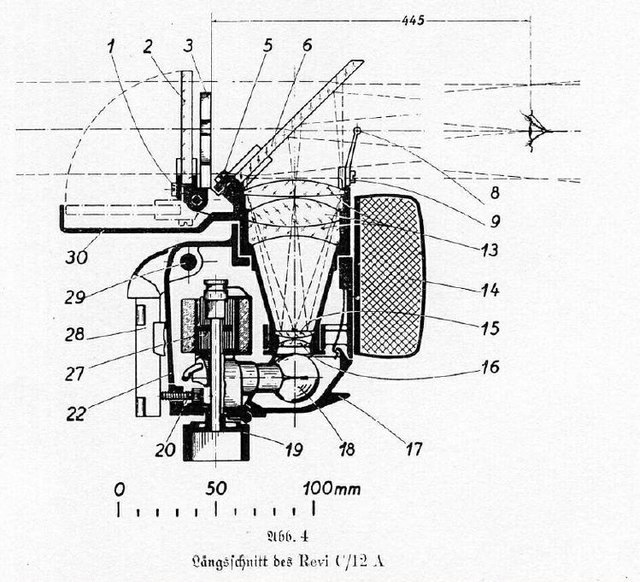A head-up display, or heads-up display, also known as a HUD or head-up guidance system (HGS), is any transparent display that presents data without requiring users to look away from their usual viewpoints. The origin of the name stems from a pilot being able to view information with the head positioned "up" and looking forward, instead of angled down looking at lower instruments. A HUD also has the advantage that the pilot's eyes do not need to refocus to view the outside after looking at the optically nearer instruments.
HUD of an F/A-18 Hornet
HUD mounted in a PZL TS-11 Iskra jet trainer aircraft with a glass plate combiner and a convex collimating lens just below it
Longitudinal cross-section of a basic reflector sight (1937 German Revi C12/A)
Copilot's HUD of a C-130J
A see-through display or transparent display is an electronic display that allows the user to see what is shown on the screen while still being able to see through it. The main applications of this type of display are in head-up displays, augmented reality systems, digital signage, and general large-scale spatial light modulation. They should be distinguished from image-combination systems which achieve visually similar effects by optically combining multiple images in the field of view. Transparent displays embed the active matrix of the display in the field of view, which generally allows them to be more compact than combination-based systems.
A device using a semi-reflective glass panel and a screen to create a see-through display
See-through OLED display
Head-up display in an aircraft







